HAN STYLE

Asian countries have been doing exchanges through culture and trade throughout history. Trends spread throughout the region at an incredibly fast rate. The 80's were a time for “Hong Kong Noir” while the 90's were more an age of Japanese animation. The 2000s have seen a sharp rise in the popularity of Korean culture, with music and dramas hitting all the right notes. Interest in Korea, triggered by the success of leading Korean dramas and popular music, continues to escalated to include a host of other aspects of Korean culture, such as hangeul (Korean alphabet), hansik (Korean food), hanbok (traditional Korean clothing), hanok (traditional Korean houses), hanji (traditional Korean paper), as well as Korean music. In Korea, the aforementioned six cultural symbols are collectively referred to as “Han Style”.
The Korean Wave that swept its way through Asia starting with dramas and popular music is now achieving even greater appeal in the international market. It has continued to evolve and boost the growing interest in Han Style.
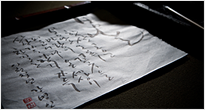
- Hangeul :
- Hangeul, the Korean alphabet, refers to the series of letters that form the written Korean language. The Korean alphabet is a highly scientific writing system that was designated by UNESCO as an important part of the Memory of the World Heritage. The Korean Wave and Korea's economic prosperity have been cited as contributing factors to the rising interest in learning hangeul and the Korean language.

- Hansik :
- Korean food continues to gain popularity throughout the world for its incredible health benefits. Hansik is fundamentally a “slow food,” a cuisine well suited to health and well being because it is primarily made of locally-grown vegetables and aged and fermented sauces, although barbequed meat dishes have also beengaining in popularity. As the unique taste and undeniable health benefits of hansik are becoming more widely known, Korean restaurants have begun to appear in more and more cities around the world.
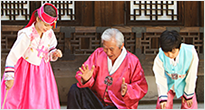
- Hanbok :
- Korean food continues to gain popularity throughout the world for its incredible health benefits. Hansik is fundamentally a “slow food,” a cuisine well suited to health and well being because it is primarily made of locally-grown vegetables and aged and fermented sauces, although barbequed meat dishes have also been gaining in popularity. As the unique taste and undeniable health benefits of hansik are becoming more widely known, Korean restaurants have begun to appear in more and more cities around the world.
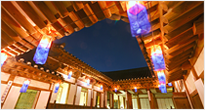
- Hanok :
- Many international visitors are showing an interest in hanok, the traditional Korean home, due to the growing recognition of ondol, the unique Korean floor heating system that has long proven effective in the cold winter season. Ondol is an important aspect of Korea's unique architectural style, and has led to a global interest in floor heating, an eco-friendly and effective system. Koreans traditionally built their homes in accordance to geomancy. Houses were positioned in careful consideration of the distance and direction in line with mountains and fields, in addition to the location of water.
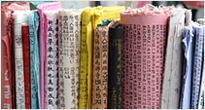
- Hanji :
- Traditional Korean paper can last for over a thousand years and is known for its superior quality and elegant design. The paper is drawing attention not only for record-keeping purposes but also for interior decorations and for its use by artists in calligraphy and paper-dying. The superior quality of Korean paper comes from the material with which it is made. The bark of the mulberry is strong, and can endure without decomposition when it is immersed in water for one year. High-quality Korean paper can be produced with tress that are only one year old, while cheaper modern paper uses pulp from trees 20-30 years old.
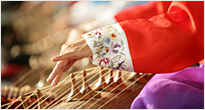
- Hanguk Eumak :
- Traditional Korean music has a slow rhythm and sentimental lyrics that express Korea’s complex history. Such unique Korean sentiments have had a significant influence on Korean popular music and dramas, and are an important driver of the Korean Wave. Royal court music is used for ceremonies and rituals, while folk music includes pansori, a traditional Korean narrative song. Pansori music is presented to audiences by skilled vocal performers and drummers.



 INTERNATIONAL
INTERNATIONAL